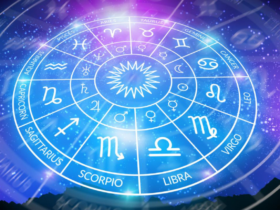Tarot cards have long fascinated individuals, beckoning with the promise of insight and guidance. Steeped in mystique and often associated with fortune-telling, these captivating decks are more than mere tools for prediction. Unlocking the secrets of Tarot involves delving into a world rich with symbolism, intuition, and self-reflection. While many seek out seasoned readers for interpretations, learning to read your own Tarot cards can be an empowering journey of self-discovery.
When delving into self-reading, it’s essential to establish a connection with your deck. This involves familiarizing yourself with each card’s imagery, symbolism, and the emotions or thoughts they evoke. Spend time meditating with your cards, shuffling them while focusing on a specific question or aspect of your life. This practice helps establish a personal rapport with the deck, fostering a deeper understanding of its language.
The layout of the cards, known as a “spread,” is crucial in interpreting their meanings. Beginners often start with simple spreads, such as the three-card or Celtic Cross spread, allowing for a structured yet comprehensive insight into a situation. Each position in the spread holds significance, indicating past influences, present circumstances, and potential future outcomes.

Interpreting Tarot cards requires a blend of intuition, symbolism, and personal insight. Trusting your instincts while considering traditional interpretations is key. When reading for yourself, approach the cards with an open mind, acknowledging both positive and challenging messages they convey. Embrace the nuances of each card and how they interact within the spread, encouraging self-reflection and introspection.
However, reading your own Tarot cards comes with a cautionary note: objectivity can be challenging when interpreting personal matters. Emotions and desires might influence interpretations, potentially clouding the true message the cards convey. To counter this, take breaks between readings, maintain a journal to document your insights and revisit them later with a fresh perspective.
Related: Cosmic Countdown: How the Stars Influence Your New Year Transition
Ultimately, Tarot serves as a tool for introspection, offering guidance rather than concrete predictions. Reading your own cards can be a profoundly illuminating experience, fostering a deeper understanding of oneself and the intricate tapestry of life. As you navigate the realm of Tarot, remember that the true magic lies within your ability to explore, interpret, and embrace the wisdom these mystical cards offer.





















